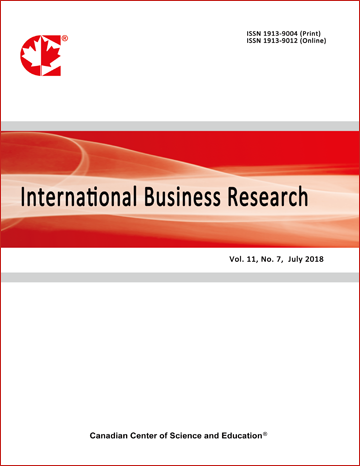The Effect of Peer Communication Influence on the Development of Materialistic Values among Young Urban Adult Consumers
- Eric V. Bindah
- Md Nor Othman
Abstract
The study attempts to uncover the characteristics of materialism groups in Malaysia among young adult consumers. It assesses the differences between materialism groups, i.e., low and high materialistic groups, using demographic and peer communication dimensions. The data was collected through self-administered questionnaires. The sample consisted of 956 respondents. The majority of the respondents were Malays followed by Chinese and Indians. The proportion of female respondents was higher than the male respondents. Most of the respondents were single and in the age group of between 19-29 years old. Independent sample t-tests were used to compare mean scores for the study variables between ‘high’ materialism and ‘low’ materialism groups and significant mean differences were found between ‘high’ and ‘low’ materialism groups in terms of peer communication construct. Specifically, it was found that the ‘high’ materialism group has considerably greater ratings on the construct. Internal consistency reliability assessment using Cronbach coefficient alpha revealed that the two dimensions had high reliability. A stepwise discriminant analysis performed on peer communication variable found that peer communication variable was significant in differentiating the two materialism groups. The implications, significance and limitations of the study are discussed.
- Full Text:
 PDF
PDF
- DOI:10.5539/ibr.v5n3p2
Journal Metrics
h-index (August 2025): 114
i10-index (August 2025): 1059
h5-index (August 2025): N/A
h5-median(August 2025): N/A
( The data was calculated based on Google Scholar Citations. Click Here to Learn More. )
Index
- ACNP
- ANVUR (Italian National Agency for the Evaluation of Universities and Research Institutes)
- CNKI Scholar
- CrossRef
- EconBiz
- EconPapers
- Elektronische Zeitschriftenbibliothek (EZB)
- EuroPub Database
- Excellence in Research for Australia (ERA)
- Genamics JournalSeek
- Google Scholar
- Harvard Library
- IDEAS
- Infotrieve
- Mendeley
- Open policy finder
- Qualis/CAPES
- RePEc
- ResearchGate
- ROAD
- Scilit
- Technische Informationsbibliothek (TIB)
- The Keepers Registry
- UCR Library
- UoS Library
- ZBW-German National Library of Economics
- Zeitschriften Daten Bank (ZDB)
Contact
- Kevin DuranEditorial Assistant
- ibr@ccsenet.org
